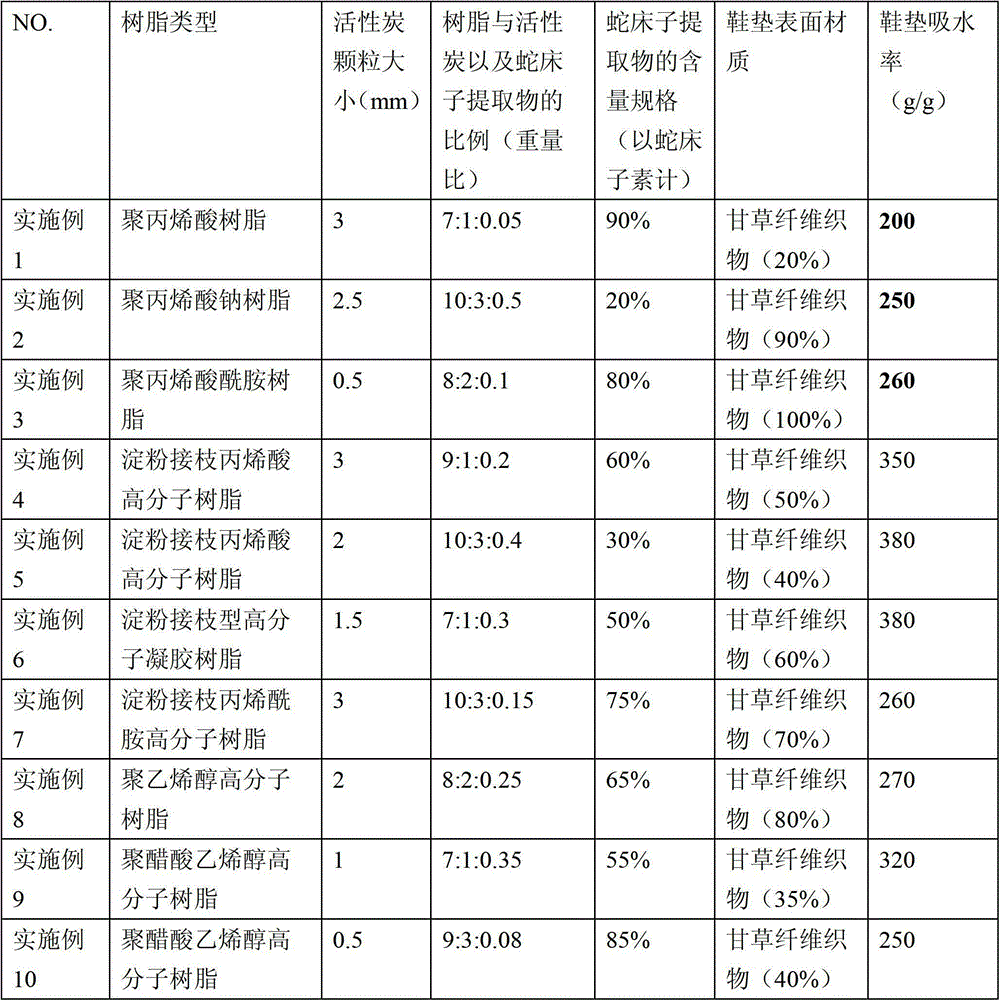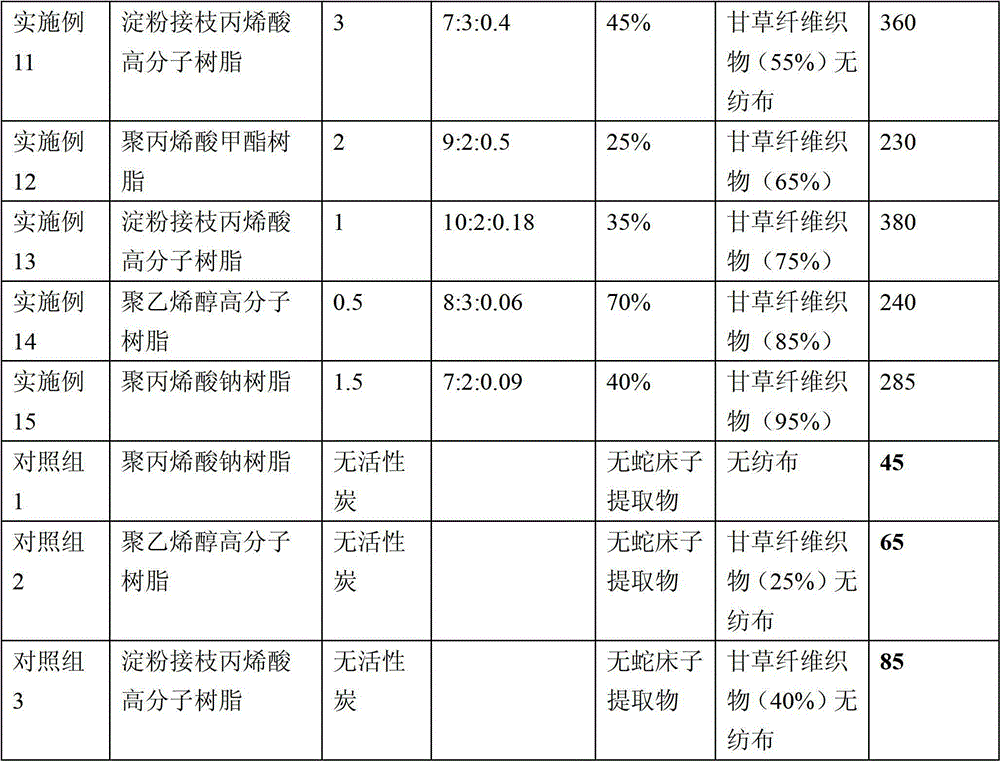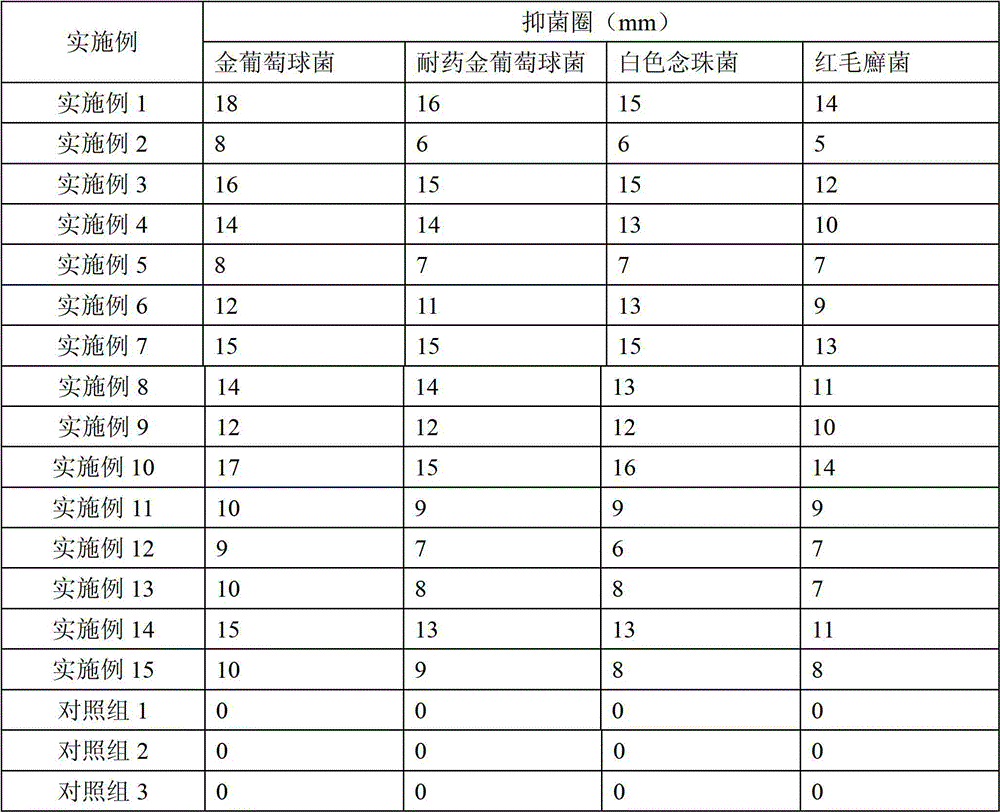A sweat-absorbing antibacterial insole
A technology of insole and antibacterial layer is applied in the field of sweat-absorbing and antibacterial insoles, which can solve the problems of reduced air permeability and the like, and achieve the effect of avoiding the reduction of air permeability and permeability.
- Summary
- Abstract
- Description
- Claims
- Application Information
AI Technical Summary
Problems solved by technology
Method used
Image
Examples
Embodiment 2
[0024] Determination of water absorption of insoles
[0025] First, put the prepared insoles into a constant temperature oven, cut them into 2*2cm pieces with scissors, dry them at 80 degrees for 4 hours to constant weight, put them into airtight plastic bags, and put them in a desiccator for later use.
[0026] When measuring, weigh a certain amount of dry insole sample, put it into a beaker, and then add it to the medium to be absorbed. After the liquid is saturated, filter out the free medium with nylon cloth, and weigh it. Use the following formula to calculate the water absorption of the insole:
[0027] Q(g / g)=(W 1 -W 0 ) / W 0 (Where: W0, W1---respectively the weight before and after absorbing liquid)
Embodiment 3
[0028] Example 3 The in vitro antibacterial activity test of various raw materials for making insoles (the in vitro antibacterial activity of the drug is measured by the Oxford cup method)
PUM
 Login to View More
Login to View More Abstract
Description
Claims
Application Information
 Login to View More
Login to View More - R&D
- Intellectual Property
- Life Sciences
- Materials
- Tech Scout
- Unparalleled Data Quality
- Higher Quality Content
- 60% Fewer Hallucinations
Browse by: Latest US Patents, China's latest patents, Technical Efficacy Thesaurus, Application Domain, Technology Topic, Popular Technical Reports.
© 2025 PatSnap. All rights reserved.Legal|Privacy policy|Modern Slavery Act Transparency Statement|Sitemap|About US| Contact US: help@patsnap.com



